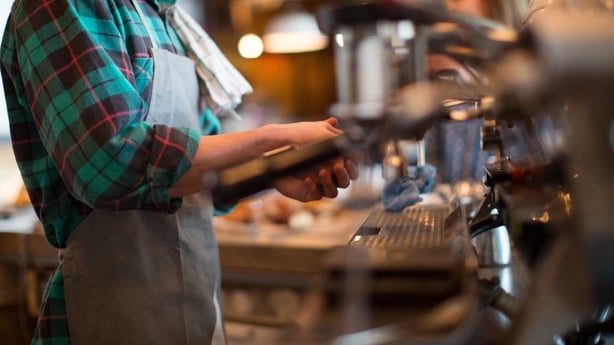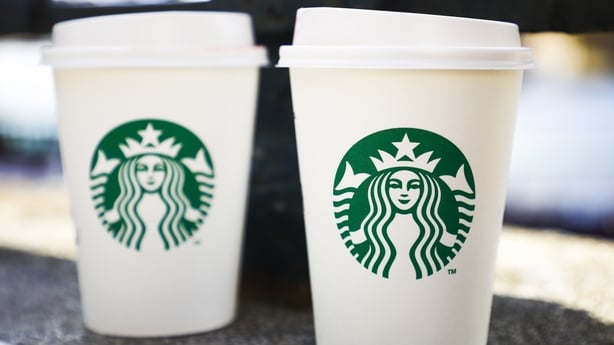Treating yourself is nothing new.
To you it might mean the odd bar of chocolate, an occasional café (rather than homemade) lunch, or a trip to the cinema.
Or maybe it's the decision to finally splash out on that item of clothing you’ve had your eye on for weeks or months.
But it was probably somewhat of a guilty secret – because you were "wasting" your money rather than putting it towards something productive.
Now, though, the odd 'little treat’ has become an economic phenomenon – and it’s one that big companies are latching on to.
How is it different?
‘Little treat’ culture is different because it’s not an occasional thing – it’s a far more regular, even daily occurrence.
It also tends to revolve around small, but relatively expensive things.
A treat is no longer a €2 bar of chocolate – it’s a €5-10 coffee or smoothie, or an indulgent cake or pastry.
Most importantly, it’s not a guilty secret either.
Treating yourself is something that people are being quite open about, and they feel is a perfectly justified thing to do with their money.
Why is that?

Like a lot of these trends, there are a number of factors crashing together to make them happen.
The most obvious is the fact that younger Millennials and Gen Zers are, broadly speaking, priced out of what would traditionally be seen as the "normal" path for a young adult.
That’s the one that sees them getting a well-paying, stable job, buying a home, maybe getting married, maybe starting a family.
Young people are still doing their bit by starting a career – maybe after years of study – and they’re trying to make progress while also contributing to their employers’ success.
But they feel there’s little hope of them getting the big rewards that should come with that.
So that leaves you with a growing demographic of adults who do have some disposable income – but not enough to do anything substantial.
Until recently that has seen many people divert their money towards experiences – like travelling, or spending big on events and concerts. But the rising cost of living means that even those things are slipping out of reach.
And that’s part of why the ‘little treat’ has become a point of pride that young people talk about on social media.
They treat themselves both as a reward and a consolation prize – and the use it as a way of expressing frustration with their situation.
It is often put forward as something they need to get through the day, or as a temporary escape from the malaise they’re feeling.
Young people are far more attuned to their mental health – is that a factor too?

Absolutely – ‘little treat’ culture is very much tied to the idea of self-care, and the practice of taking time for yourself to do something that makes you happy.
This is also a generation that is probably far more aware of not just their own issues, but also global problems.
There is ever-growing anxiety around climate change, social media feeds are full of images of war and famine, while the online world in general is an often negative place.
So there’s no shortage of things for people to be down about – and in need of a little pick-me-up.
But younger people are far more conscious of their physical health and fitness too – and on the surface the ‘little treat’ culture might seem counter to that.
But it’s not, really.
Earlier this week there were figures showing that alcohol consumption in Ireland continues to fall.
That’s because people, in particular younger people, are not going out as much as previous generations.
Part of that again comes back to the cost – but part of it is also because people are aware of the negative health impacts of alcohol consumption. They also don’t want to give up their Saturday or Sunday to a hangover; they want to be able to be active on those days.
So while in the past people might have looked towards weekend drinks – and maybe a cheeky takeaway – as their treat, that’s not there so much anymore.
So it’s been replaced by these smaller, and more frequent, little treats that are peppered through the week instead.
And they don’t always have to revolve around food or drink – they might be an item of clothing, or a trip to the beauticians, or a trip to the cinema.
Have businesses spotted this trend too?
Absolutely.
Consultancy group McKinsey in May put out a survey of consumer trends – and it identified how different generations in the US were spending their disposable income.
Consumers were asked where they were most likely to splurge and 38% of baby boomers (people in their 60s and 70s) chose restaurants and bars. Travel was chosen by 37%.
But for Millennials and Gen Zers (people aged 40 and younger) groceries were the most popular category.
That points to people who can’t justify a night out – or a trip away – but are instead focused on picking up some really nice items in their weekly shop.
Maybe they’ll try out that recipe they came across on TikTok or Instagram.
The next most common categories Gen Zers were planning to splurge on were beauty and personal care, followed by clothing.
So the trend is clear – how are companies looking to exploit it?

Whole Foods – which is a big retailer in the US – has honed in this as an important trend, with its CEO pointing to the likes of a little luxurious dessert pot as an example of the kind of product someone would buy if they’re looking for a treat, without blowing out their budget, or undoing all their hard work in the gym.
And while supermarkets have always had some higher-end products on their shelves, there do now seem to be a lot more options – across the food and beauty aisles – that are pitched as luxurious, artisanal, craft and so on.
And it also goes towards explaining why you can go into a major coffee chain now and pay €7 just for a drink – and probably the same again for a cake to go with it, if you’re so inclined.
And it’s part of the reason why we’re always seeing big chains and brands bring out limited edition products – often very Instagram-friendly ones – while a lot of their online marketing is now geared towards encouraging people to come to them for their ‘little treat’.
What’s the downside to this trend?

There are potential negatives for consumer, but also the businesses trying to exploit this trend.
For the consumer, there’s obviously going to be the argument that these people are wasting their money when they could be saving it for those big purchases, like a house.
But they would likely say that, when you add it all up, the few hundred euro a year spent on ‘little treats’ is not going to do much to bridge the five-figure gap between them and a house.
There is also the argument that this is just displaced spending from the holidays or regular nights out that they’re now not going on.
But there is potentially a bigger problem underneath this – and that it’s essentially about using consumerism to try and make you happy, or to try to forget the things that are getting you down.
It’s one thing if you decide to get a little treat after a particularly rough day.
But if you’re trying to ‘little treat’ your way out of a deeper malaise – that’s not going to work, and it creates an unhealthy link between your mood and your money.
There’s also something a bit insidious about companies encouraging you to spend your money as a quick fix to make you feel better.
"Buy this smoothie to forget about the existential dread for a half hour" isn’t a great look (though really it’s something companies have been doing in one form or another for a long time).
But the risk is not just to consumers – the companies themselves need to tread carefully too.
Ultimately this trend is around luxury spending – even if it’s only little luxuries like an expensive coffee.
And time and time again we have seen that luxury spending is the first to dry up when there’s an economic downturn – or when people are concerned about their financial situation.
And we’re seeing that happen right now.
High-end fashion and drinks brands like Burberry, Hugo Boss, Swatch, Diageo and LVMH have been reporting falls in sales and profits in the past year.
And that is trickling down to mainstream brands like Starbucks and McDonalds’, which have both very much tried to capitalise on ‘little treat’ culture.
They had seen strong sales growth in the wake of the pandemic but that has slipped in recent months.
In part that’s because consumers are being turned off by ever-increasing prices.
Aside from that, spending on these little treats is also very buzzy and fickle – people like novelty and can very quickly move from obsessing over one product to another.
So if you’re going to try and grow your business on this market – it’s going to take a lot of work to make sure you stay ahead of the curve in what kind of products people will want next.







